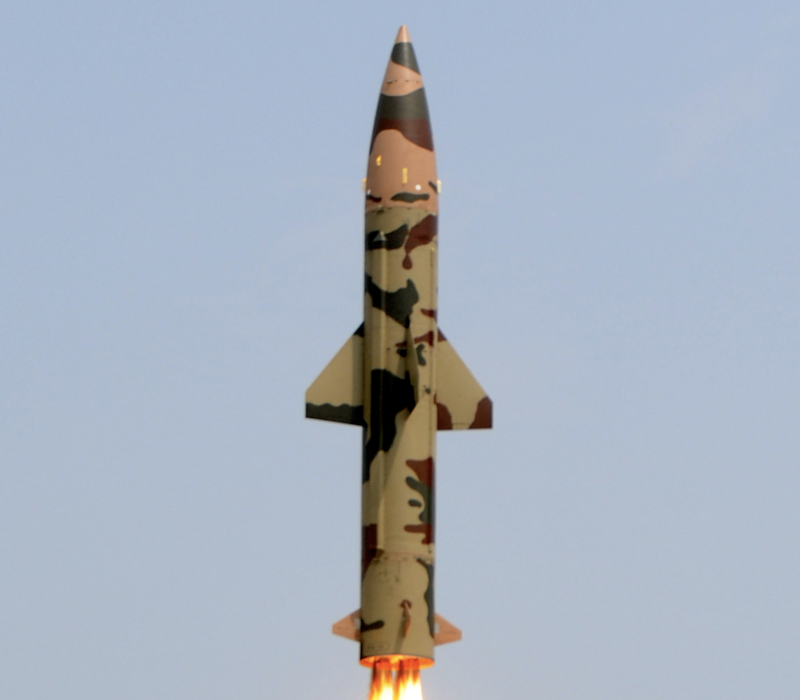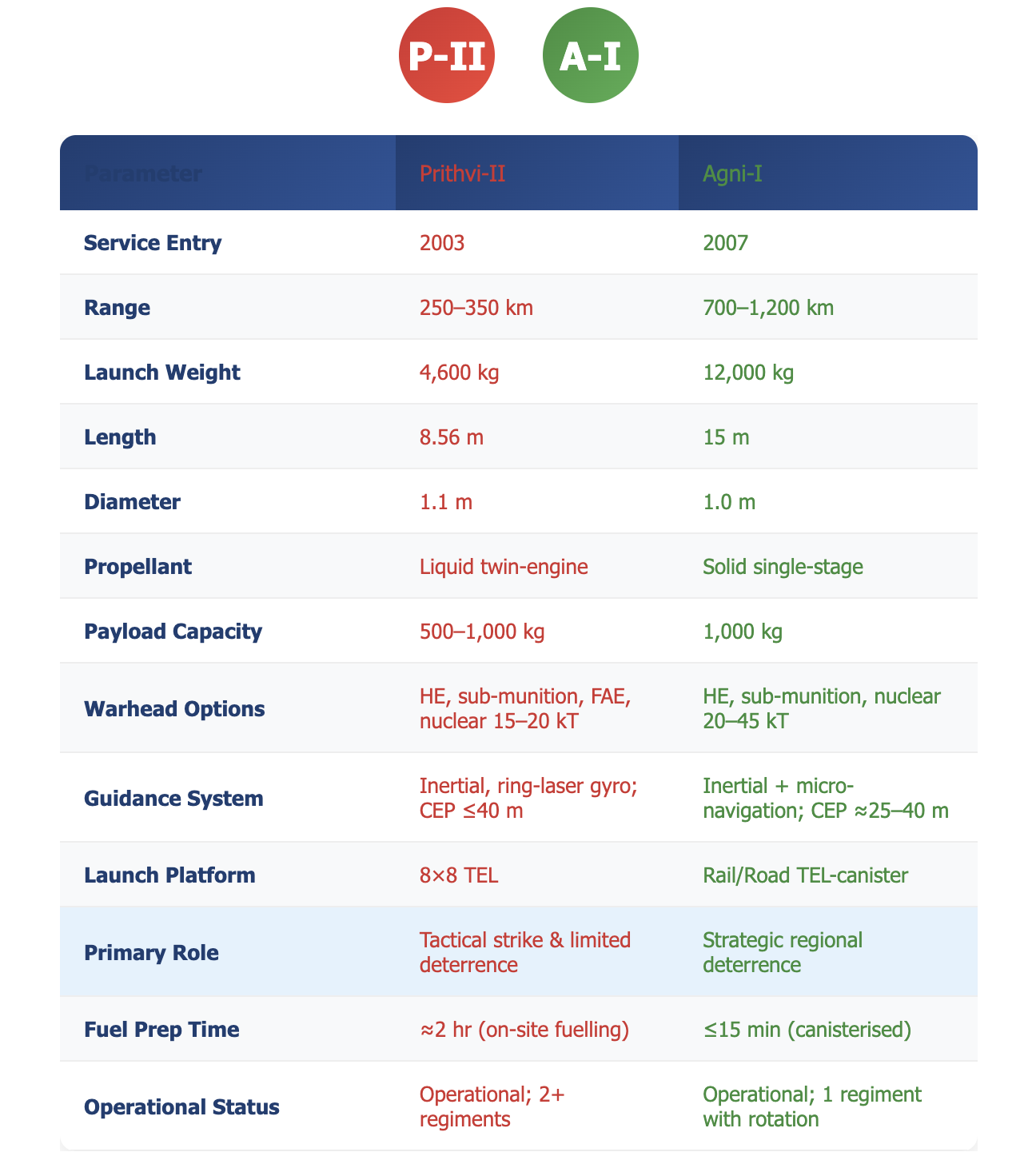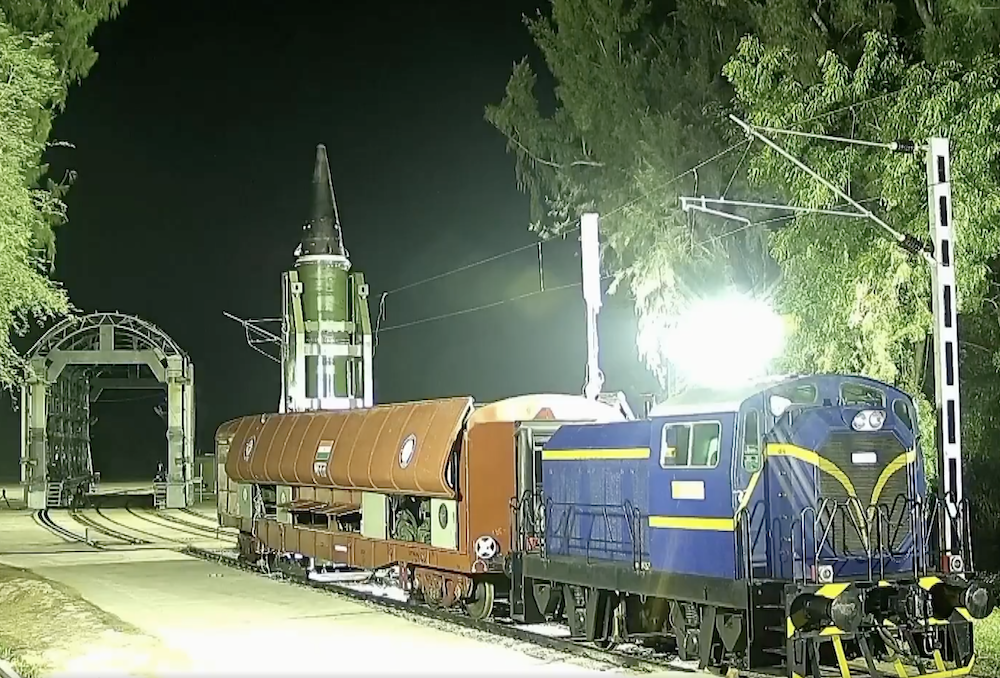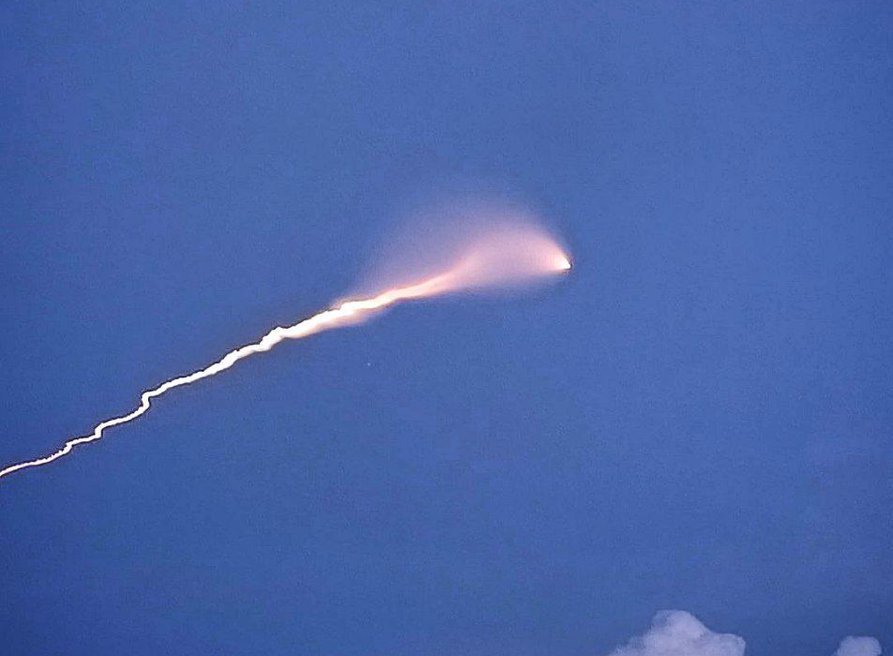 File photo of a Prithvi II missile during its test-firing.
File photo of a Prithvi II missile during its test-firing.
New Delhi: India conducted back-to-back tests of two nuclear-capable short-range ballistic missiles on Thursday, the Ministry of Defence said in a release. Although defence officials described as a routine validation exercise, the tests nonetheless sent a clear message about the country’s strategic capabilities during a period of heightened regional tensions.
The Strategic Forces Command (SFC) successfully fired the Prithvi II and Agni I missiles within a two-hour window from the Integrated Test Range at Chandipur, Odisha, with both weapons demonstrating pinpoint accuracy well within their operational parameters. The dual launch came just one day after India tested its Akash Prime air-defence system in high-altitude trials in Ladakh, underlining the military’s capacity for multi-domain operations.
The carefully orchestrated exercise began at 6.57pm when an SFC road-mobile unit launched an Agni I missile from Launch Pad-4 on Abdul Kalam Island, formerly Wheeler Island. At 8.35pm, a Prithvi II missile was fired from Launch Pad-3 in the mainland Chandipur sector, completing what the ministry of defence called a comprehensive validation of “all operational and technical parameters”.
Real-time telemetry data captured by the Defence Research and Development Organization’s network of radars, optical trackers, and ship-based sensors confirmed that both missiles followed nominal trajectory profiles. The Agni I achieved accuracy well within its 25–40 metre CEP (circular error probable) envelope, while the Prithvi II performed within its 40-metre tolerance – precision levels that make conventional warhead employment credible against high-value targets.
Defence analysts noted that while labelled as routine user trials, the simultaneous deployment of two different missile systems offered strategic advantages. The exercise allowed crews to cross-calibrate inertial guidance systems under matched meteorological conditions, compressed training cycles for launch personnel, and demonstrated India’s ability to conduct dispersed operations across multiple domains.
Technical capabilities
The Prithvi II, India’s workhorse tactical missile, emerged from the Integrated Guided Missile Development Programme as the air force variant designed to bridge the gap between unguided rockets and medium-range systems. First tested in January 1996 and inducted into SFC service in 2003, it has logged more than 25 user trials, including multiple nighttime salvo launches.
With a range of 250–350 kilometres and payload capacity of 500–1,000 kilograms, the Prithvi II can carry conventional high-explosive warheads, sub-munitions, fuel-air explosives, or 15–20 kiloton nuclear warheads. Its twin liquid-fuel engines deliver 30-tonne thrust, though cold-start operations require on-site fuelling that extends launch preparation to approximately two hours. The system’s strap-down inertial navigation with ring-laser gyroscopes provides exceptional accuracy, with recent upgrades achieving circular error probable ratings below 40 metres.
The Agni I represents a different technological approach, conceived after the Kargil conflict to extend India’s reach beyond the Prithvi’s range while remaining shorter than the Agni II. Repurposing technologies from the original Agni technology demonstrator, it achieved first flight on January 25, 2002, and entered service in 2007.
Operating at ranges of 700–1,200 kilometres with a 1,000-kilogram payload capacity, the Agni I employs single-stage solid propulsion that enables rapid launch readiness and reduces logistical signatures. Its inertial guidance platform, enhanced with micro-navigation corrections drawn from Agni IV sensors, achieves 25–40 metre accuracy. The missile’s rail and road mobility through canisterized transport-erector-launchers provides environmental conditioning across India’s varied climate zones.

Timing and regional context
The timing of the dual test carried particular significance, occurring against the backdrop of increased military activity across South Asia. The People’s Liberation Army Rocket Force conducted exercises opposite Arunachal Pradesh earlier in July, while Pakistan carried out tactical nuclear weapon drills in its Punjab province. Defence officials positioned India’s missile tests as calibrated signalling rather than escalation, a reading apparently shared by Beijing, where state media noted the launches without editorial commentary.
The Prithvi II’s footprint covers Pakistan’s major forward airbases, supply depots, and command nodes, contributing to India’s “dissuasion by punishment” doctrine through conventional pre-emption options while retaining nuclear flexibility. The Agni I’s extended range provides coverage of high-value targets in southern China, with the 334 Missile Group maintaining deployment readiness from south-central basing locations.
Both weapons systems demonstrate the evolution of India’s strategic thinking, where sub-50-metre circular error probable capabilities make conventional warhead employment credible, narrowing the gap between nuclear and conventional utility. This precision allows neutralisation of runways or hardened command bunkers with fewer rounds – particularly important given India’s limited short-range ballistic missile inventory relative to potential target sets.
The contrasting propulsion systems highlight different operational philosophies. The Prithvi II’s liquid propellant grants high thrust-to-weight ratios but requires longer launch preparation and creates greater logistical signatures, making it better suited for rapid-fire salvos at short depth once hostilities commence. The Agni I’s solid fuel enables true launch-on-demand capability, aligning with India’s doctrine of credible minimum deterrence while maintaining survivability against first-strike scenarios.
Modernization
The tests underscore a consistent DRDO pattern whereby each “routine” user trial incorporates incremental upgrades – new inertial navigation system gyroscopes for the Prithvi II in 2022, and composite motor casings for the Agni-1P successor in 2024 – without withdrawing legacy systems until replacements prove maturity.
Recent satellite imagery indicates at least two fresh earth-covered shelters in Telangana and Madhya Pradesh matching transport-erector-launcher dimensions for the Agni I, suggesting expanded dispersed basing to complicate adversary surveillance. The distributed deployment capability, combined with the Agni I’s rail mobility and Prithvi II’s road portability, enables operations across the central plateau that enhance survivability.
While the DRDO continues flight-testing the Agni-1P – an all-composite, dual-stage, canisterized successor – the current Agni I maintains front-line deployment with operational regiments. The Prithvi II remains active with at least two regiments, providing the Army’s precision strike capability within 350 kilometres.
Operational readiness
Thursday’s twin tests served multiple purposes beyond routine validation, demonstrating India’s ability to coordinate liquid and solid-fuel missile operations in quick succession, validating hardware upgrades, refreshing SFC crew skills, and conveying measured strategic resolve. The Integrated Test Range’s infrastructure, comprising Launch Complex III on the Chandipur mainland and Launch Complex IV on Abdul Kalam Island 15 kilometres offshore, enables networked operations that separate liquid-fuel assets from solid-fuel missiles carrying higher over-pressure risks.
The range’s telemetry infrastructure – five electro-optical stations, dual S-band tracking radars, and a C-band precision tracking radar – can triangulate missile flight paths up to 1,200 kilometres down-range, adequate to follow the Agni I through apogee and splash-down. Maritime safety protocols include a three-nautical-mile exclusion zone for fishing and merchant shipping, declared six hours before launch windows open.
Together, the Prithvi II and Agni I anchor India’s lower-tier nuclear deterrent while providing discriminating conventional strike options calibrated to the escalatory ladder. As both systems undergo incremental modernization and potential replacement by next-generation platforms, they continue to serve as the backbone of India’s regional strategic posture, offering policymakers both tactical flexibility and strategic depth in an increasingly complex security environment.


